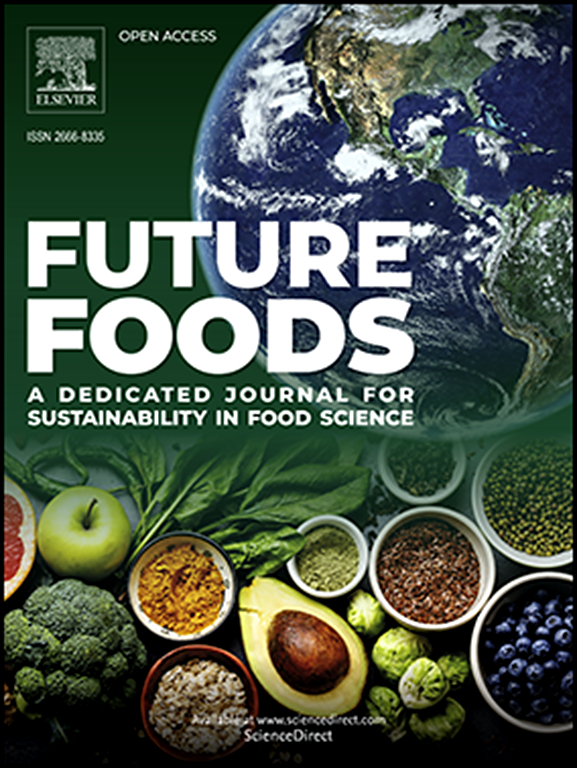Powdered oat drink production by pulse spray drying
IF 7.2
Q1 FOOD SCIENCE & TECHNOLOGY
引用次数: 0
Abstract
Oat is a well-studied food known for its nutritional properties, which provide health benefits under regular consumption. The potential of a new spray drying technology (pulse spray drying, PSD) was explored in drying oat drinks. Additionally, feed solutions were dried by traditional spray drying (SD), and the effect of maltodextrin addition was assessed. Two types of powder samples were collected: the primary powder, from the main chamber; and the overall powder, after mixing both the powder from the main chamber and the powder from the cyclone separator. Some physicochemical properties of the powders and their morphological characteristics were examined. The analyses performed did not indicate significant differences between primary and overall powders. Maltodextrin-added powders from PSD presented higher moisture, water activity (aw), solubility, and particle size; and lower bulk and tapped densities, indicating a higher volume occupied by the particles. Color measurements (luminosity and chroma) differed between the drying treatments: a lighter coloration was observed in the SD group. Finally, images from scanning electron microscopy (SEM) revealed that the lower moisture content in the samples without maltodextrin led to a greater distribution of pores in the surface of particles. In conclusion, the data raised in this study suggest that using the PSD in combination with maltodextrin can be a good approach to dry vegetable drinks. However, other drying parameters need to be tested to improve the powder flow properties (e.g., airflow rate, atomization pressure, relative humidity, feed composition), as they are important characteristics during the processing.
求助全文
约1分钟内获得全文
求助全文
来源期刊

Future Foods
Agricultural and Biological Sciences-Food Science
CiteScore
8.60
自引率
0.00%
发文量
97
审稿时长
15 weeks
期刊介绍:
Future Foods is a specialized journal that is dedicated to tackling the challenges posed by climate change and the need for sustainability in the realm of food production. The journal recognizes the imperative to transform current food manufacturing and consumption practices to meet the dietary needs of a burgeoning global population while simultaneously curbing environmental degradation.
The mission of Future Foods is to disseminate research that aligns with the goal of fostering the development of innovative technologies and alternative food sources to establish more sustainable food systems. The journal is committed to publishing high-quality, peer-reviewed articles that contribute to the advancement of sustainable food practices.
Abstracting and indexing:
Scopus
Directory of Open Access Journals (DOAJ)
Emerging Sources Citation Index (ESCI)
SCImago Journal Rank (SJR)
SNIP
 求助内容:
求助内容: 应助结果提醒方式:
应助结果提醒方式:


